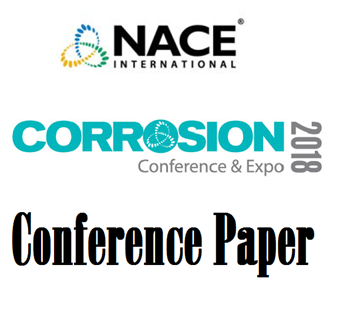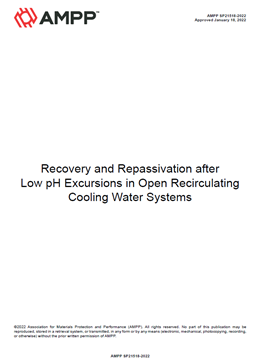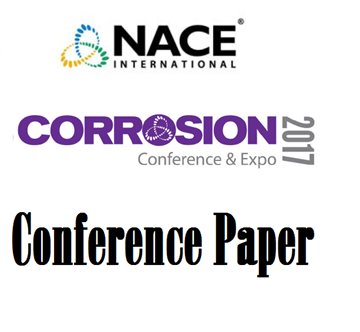Search
Products tagged with 'chemical treatment'
View as
Sort by
Display
per page
51318-11037-Methodology adopted to minimize the Risk of Oil and Gas Surface Facility during a Prolonged Shutdown Within Partitioned Zone (Kingdom of Saudi Arabia and Kuwait).
Product Number:
51318-11037-SG
Publication Date:
2018
$20.00
AMPP SP21518-2022, Recovery and Repassivation after Low pH Excursions in Open Recirculating Cooling Water Systems
Product Number:
AMPP SP21518-2022
Publication Date:
2022
$109.00
Building an Oil and Water Partitioning Model for Corrosion Inhibitor Dosage Based on Novel Residual Technique
Product Number:
51323-19205-SG
Publication Date:
2023
$20.00
Challenges of Implementing Chemical Treatment Preservation Programs on Oil Production Wells During a Prolonged Shutdown within Partioned Zone
Product Number:
51317--8966-SG
ISBN:
8966 2017 CP
Publication Date:
2017
$20.00
Chemical & Enhanced Preservation Methodologies Endeavors To Maintain The Integrity Of Joint Operation (JO) Surface Facilities
Product Number:
51322-18106-SG
Publication Date:
2022
$20.00
Chemical & Enhanced Preservation Methodologies to Maintain the Integrity of Joint Operation (JO) Surface Facilities
Product Number:
51323-18792-SG
Publication Date:
2023
$20.00
Closed Loop Corrosion Control: Case Studies Of A Reliable, Robust, & Sustainable Treatment Program
Product Number:
51322-17723-SG
Publication Date:
2022
$20.00
Corrosion Inhibitors In O&G Industry: A Review Of Current Application Challenges And Research Gaps
Product Number:
51322-17794-SG
Publication Date:
2022
$20.00
Corrosion Management Improvements in Liquids-Rich Shale Play - Pipeline Internal Corrosion Mitigation Case Studies
Product Number:
51324-20990-SG
Publication Date:
2024
$40.00
Development of Iron Sulfide Scale Inhibitor For Ultra-Tight Sandstone
Product Number:
51322-17896-SG
Publication Date:
2022
$20.00
Electrochemical Testing To Predict Corrosion Performance on Various Aluminum Alloys
Product Number:
51321-16292-SG
Publication Date:
2021
$20.00
Evaluation of Seawater Treatments to Mitigate the Corrosion Rate of Carbon Steels and CRAs Rigid Pipeline During Pre-Commissioning Operations and Long-Term Wet Storage
Product Number:
51324-21050-SG
Publication Date:
2024
$40.00












